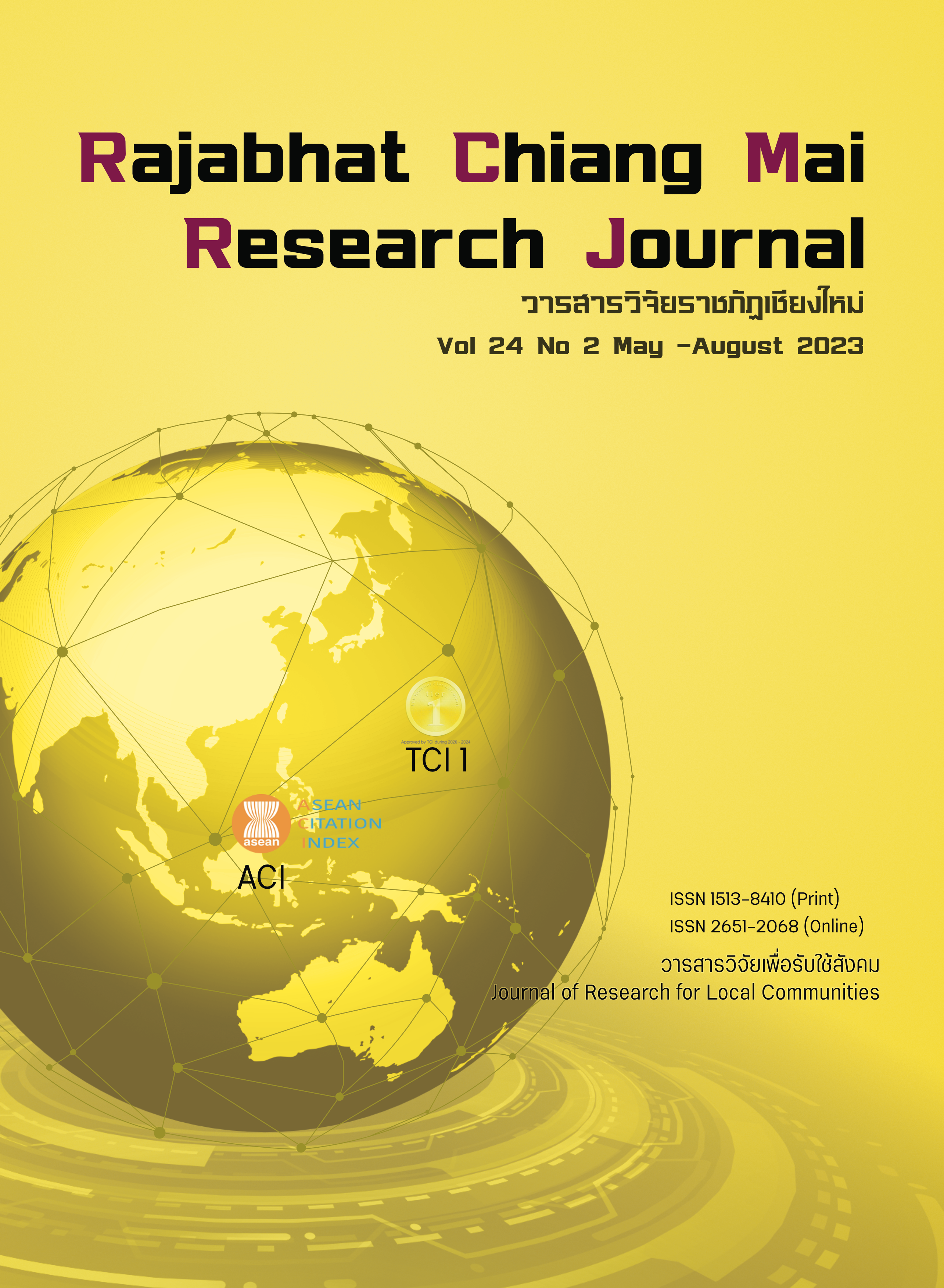Causal Factors of Enhancing Employee Loyalty towards Organization
DOI:
https://doi.org/10.57260/rcmrj.2023.264685Keywords:
Causal factors, Enhancing employee, Loyalty, OrganizationalAbstract
The objectives of the study were 1) to study “casual” factors enhancing employee loyalty towards organization, and 2) to develop a structural equation model of factors enhancing employee loyalty towards organization. The quantitative and qualitative research methods were implemented in this study. The quantitative data were collected from the interviews of 500 industrial business executives.
The findings indicated that the significance levels of employee loyalty towards organization were high in all aspects. The highest significance level of leadership was that the executives provided a work manual describing the structure of work. The highest significance level of labor union was that the organizations provided proper cost-of-living and fringe benefits for employees. The highest significance level of organizational commitment was that the employees always maintained their organizational values. The hypothesis testing revealed that the small, medium, and large enterprises differently focused on the enhancement of employee loyalty towards organization at statistical significance level of .05.
The results of structural equation model analysis showed that it passed the evaluation criteria with empirical data congruence including Chi-square probability of 0.699, relative Chi-square of 0.940, index of item objective congruence of 0.970, and root mean square error of approximation of 0.000.
Downloads
References
Adnan, C., & Bulent, A. (2009). A Research Analysis on Employee Satisfaction in terms of Organizational Culture and Spiritual Leadership. International Journal of Business and Management, 4(3), 159-168. DOI:10.5539/ijbm.v4n3p159
Alpander, G. G. (1990). Relationship between commitment to hospital goals and job satisfaction: a case study of a nursing department. Health Care Management Review, 15(4), 51–62. https://www.jstor.org/stable/44950413
Arbuckle, J. L. (2016). IBM SPSS Amos 24 User’s Guide. Armonk, NY : IBM
Bruce, M., Reggie, M., & Ruth, R. (2018). Labor-Management Cooperation in Illinois: How a Joint Union Company Team Is Improving Facility Safety. A Journal of Environmental and Occupational Health Policy, 28(2), 227-239. DOI: 10.1177/1048291118759303
Fiedler, F. E., Martin, M. C. & Marhar, L. (1976). Improving Leadership Effectiveness : The Leader Match Concept. New York : John Wiley and Sons.
Lamsuthi, V., & Silpcharu, T. (2020). The Management Direction of Industrial Business Organization with the Buddhadhamma Principles. Applied Science and Engineering Progress, 13(2), 175-182. https://ph02.tci-thaijo.org/index.php/ijast/article/view/240603 ( In Thai)
Locke, E. A. (1976). The nature and causes of job satisfaction. In M. D. Dunnette (Ed.), Handbook of industrial and organizational psychology. Chicago, IL: Rand McNally.
Meyer, J. P., Allen, N. J., & Smith, C. A. (1993). Commitment to organizations and Occupations : Extension and test of a three-component conceptualization. Journal of Applied Psychology, 78(4), 538-551. https://doi.org/10.1037/0021-9010.78.4.538
Ministry of Labour. (2020). Labour Statistics Yearbook 2019. The Office of Permanent Secretary. ( In Thai)
Mitmek, T., & Worawattanaparinya, S. (2020). Guidelines to Retain Staffs in Industrial Business Organization. Academy of Entrepreneurship Journal, 26(1). 175-182 https://www.abacademies.org/articles/guidelines-to-retain-staffs-in-industrial-business-organization-8995.html ( In Thai)
Siljaru, T. (2020). Research and statistical analysis using SPSS and AMOS. Bangkok: ( In Thai)
Steers, R. M. (1991). Introduction to Organization Behavior. New York: Collin.
Raziq, A., & Maulabakhsh, R. (2014). The Impact of Working Environment on Job Satisfaction. Procedia Economics and Finance. Conference : 2nd Global Conference on Business, Economics, Management and Tourism 30-31. October 2014.
Zulfikri, A, T., Yaakob, D, Yahya, D., & Arumugam, R. (2015). Organizational Leadership and Organizational Commitment of Kedah District Education Officers. Global Institute for Research and Education, 4(2), 7-12. https://repo.uum.edu.my/id/eprint/19472/
Downloads
Published
How to Cite
Issue
Section
License
Copyright (c) 2023 Rajabhat Chiang Mai Research Journal

This work is licensed under a Creative Commons Attribution-NonCommercial-NoDerivatives 4.0 International License.
1. Articles, information, content, images, etc published in the “Community and Social Development Journal” are copyrighted by the Community and Social Development Journal, Chiang Mai Rajabhat University. In order to properly distribute the articles through print and electronic media, the authors still hold the copyright for the published articles under the Creative Commons Attribution (CC BY) license, which allows the re-distribution of the articles in other sources. References must be made to the articles in the journal. The authors are responsible for requesting permission to reproduce copyrighted content from other sources.
2. The content of the articles appearing in the journal is the direct responsibility of the article authors. The editorial board of the journal does not necessarily agree with or share any responsibility.














